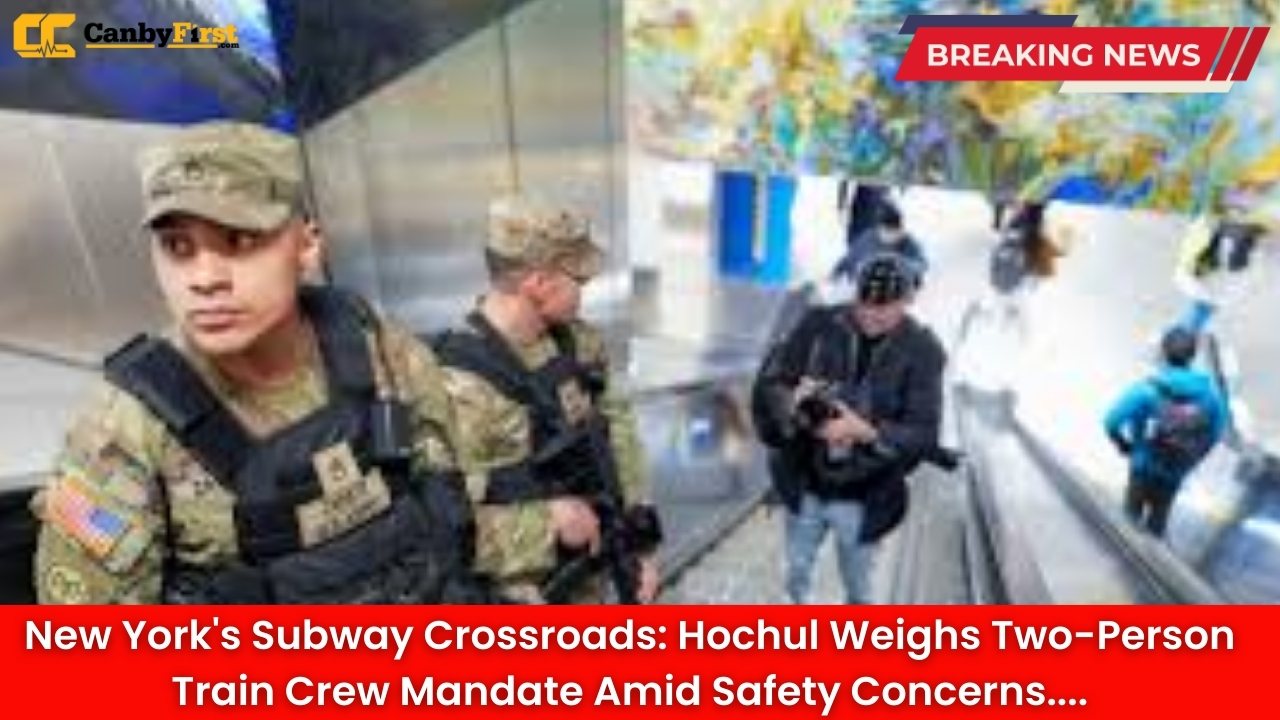New York, US: The bustling New York City subway system, carrying millions daily through its vast underground network, is now at the center of a heated debate. Governor Kathy Hochul is weighing whether to sign legislation that would require all subway trains in the state to operate with at least two crew members. The proposal, fueled by safety concerns and labor advocacy, faces sharp opposition from transit officials who argue it could complicate efficiency, inflate costs, and limit flexibility in future operations.
A Push for Enhanced Safety
The legislation, backed strongly by transportation unions and passenger advocacy groups, stems from rising anxieties over subway safety in recent years. Subway operators, often alone in the front cab, face heightened responsibilities including operating trains, responding to emergencies, and communicating with central control. Supporters of the bill argue that a second crew member is essential to assist with passenger incidents, train malfunctions, and emergency evacuations.
Union leaders have pointed to real-life episodes where a second operator could have meant quicker responses. These include medical emergencies on board, delays caused by technical failures, and crime incidents that left conductors torn between maintaining control of the train and providing aid. Advocates insist that two-person crews could improve daily safety and restore public confidence in the system.
Also Read
Balancing Safety with Modernization
While the safety argument resonates with many riders and lawmakers, critics worry the bill could hinder New York City Transit’s modernization agenda. The Metropolitan Transportation Authority (MTA), which manages the subway system, has been investing heavily in technology upgrades such as automated train control. These initiatives aim to improve reliability, reduce delays, and eventually allow more flexible crew assignments.
Opponents of the legislation, including some transportation policy experts, warn that mandating two-person crews across the board may prevent the system from adopting more efficient models in the future. They argue that other global subway systems, including some highly advanced networks, function safely with fewer staff due to automation and robust communication systems.
Financial Pressures Add Complexity
Compounding the debate is the enormous financial strain the subway system faces. With ridership still recovering after the pandemic and operating expenses soaring, the MTA has struggled to balance its books. A two-person mandate, opponents argue, could add millions in annual labor costs.
Transportation officials caution that meeting the requirement might force budget trade-offs, potentially delaying infrastructure upgrades, maintenance work, or service increases. Those skeptical of the legislation believe additional funds should prioritize improving subway reliability and expanding service rather than staffing mandates.
Rider Reactions Divide Along Safety Lines
For many New Yorkers, the debate is as much about feeling safe underground as it is about service. Regular commuters have expressed mixed opinions. Some commuters welcome the idea of extra staff onboard, saying the presence of another uniformed employee would make them feel more secure during evening rides or in emergency situations.
Others, however, question whether adding another worker would tangibly improve outcomes, suggesting that investments in security cameras, station patrols, or better communication technology may offer more significant gains for public safety. Riders also voice concerns about possible fare hikes if labor costs increase under the new law.
Political Calculations for Hochul
Governor Hochul now faces a delicate political balancing act. Signing the bill would secure strong backing from transit unions and groups prioritizing subway safety. It would also address growing concerns about crime on public transit, an issue that remains politically sensitive given New York’s reliance on its subway system.
However, vetoing or delaying the legislation would align with fiscal concerns and modernization goals championed by the MTA and business leaders. Hochul’s decision is expected to weigh heavily on how she frames the future of both subway operations and labor relations in the state.
Looking Ahead
As the subway network continues to recover from the pandemic’s impact on ridership and finances, Hochul’s upcoming decision could chart the system’s long-term course. Should she support the bill, New York could cement a model prioritizing human oversight on trains regardless of future technological advancements. Rejecting the mandate, on the other hand, would likely keep the MTA’s modernization track open while stirring discontent among unions and certain rider groups.
For now, New Yorkers wait underground and above, hoping that the choice made in Albany will align safety, efficiency, and the future of one of the world’s most iconic transit systems.
FAQ
What does the proposed legislation require?
It mandates that every subway train in New York operate with at least two crew members: a train operator and a conductor.
Why is it being proposed?
The bill is meant to improve safety by ensuring there is always an additional staff member available to assist during emergencies, technical failures, or passenger incidents.
Who supports it?
Transit unions, some lawmakers, and passenger safety advocates.
Who opposes it?
MTA officials and some policy experts, who argue it could increase costs and prevent adoption of advanced technology.
When will Governor Hochul decide?
A decision is expected in the coming weeks, as pressure builds from both sides of the debate.












